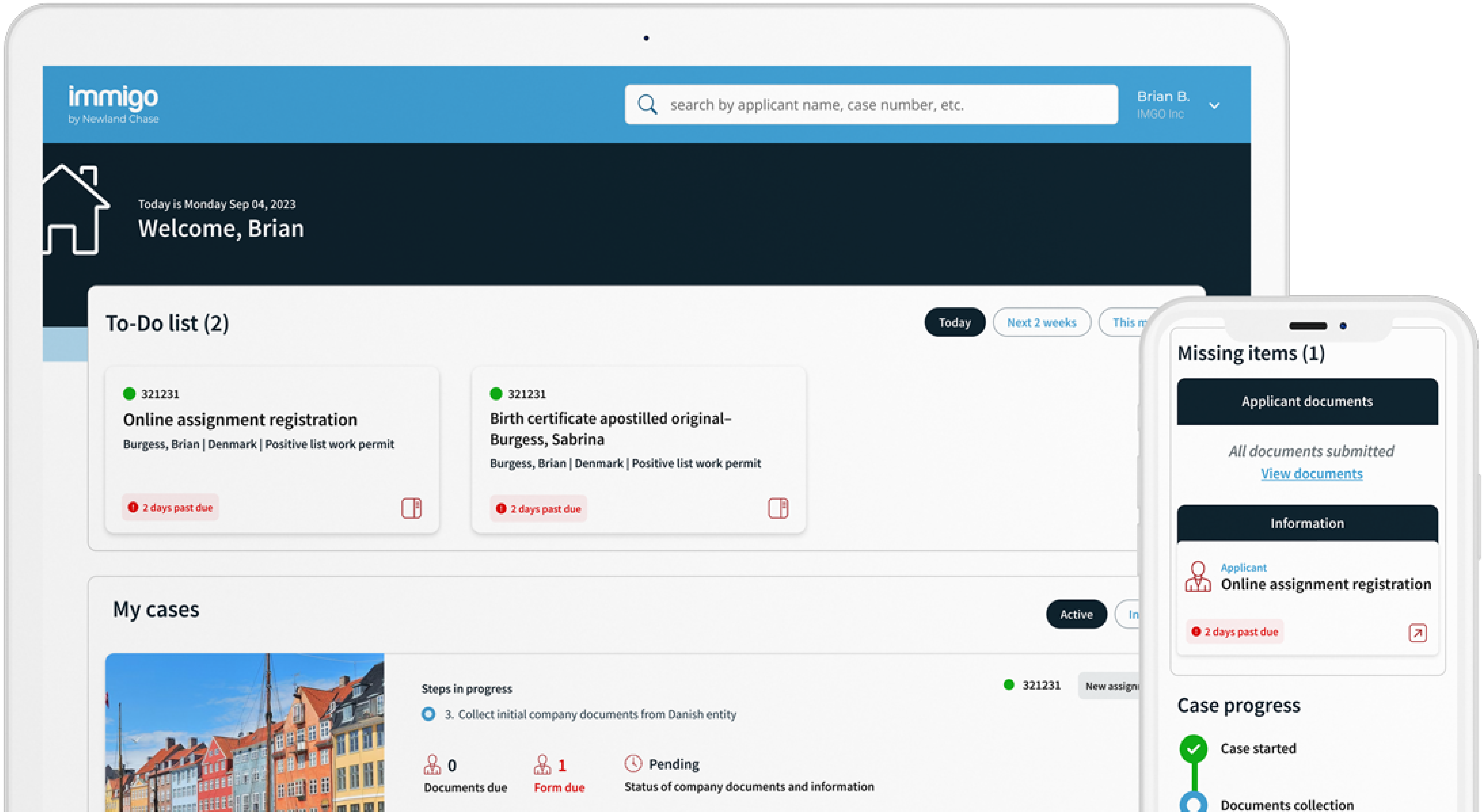Get The Visibility Your Company Needs
Reduce compliance risks and mobility costs while managing individual and project-related travel with ImmiSMART: the solution that unifies your travel and mobility programs.
The UK’s Tier 2 Quota: Stepping Down from the Carousel
August 15, 2018
“So when will this end
It goes on and on
Over and over and over again
Keep spinning around
I know that it won't stop
Till I step down from this”
“Sick Cycle Carousel”, Lifehouse, DreamWorks Records (2000)
By Antonio Lam, Managing Director, United Kingdom, Newland Chase
Like the song says… Tier 2, when will this end? It goes on and one, over and over again, keep spinning around, I know this won’t stop till I step down from this … or insert whatever other circular reference you prefer – carousels, record players (for those into the classic vinyl), The London Eye, Piccadilly Circus at rush hour – but you get the point. The more things change; the more things stay the same. And yesterday’s solutions become today’s problems become tomorrow’s solutions become the day after’s solutions, ad infinitum.
Part 2 of 2 (Read Part 1 here.)
Stepping Down from the Carousel
If last week’s first instalment of this blog was the “bad news”, i.e. what is wrong with the Tier 2 system, this week is the “good news” in that there is something that both government and businesses can do to remedy and improve upon the system.
What Can the Government Do?
The generalised quota system has an inherent drawback in that it does not truly differentiate between industries or regions in its allocation (except for those named on the Shortage Occupation List (SOL). In the long-term, a system more responsive to changes in industry and regional needs would be more beneficial to business and the economy. However, any lobbying efforts for such a system has been somewhat put on ice as a result of Brexit planning. For the time being, consideration of a regional immigration system has been deemed too complicated to consider given all of the other changes on tap.
The Government appears to believe that providing further additions to the SOL is the best solution for the current Tier 2 problems and a workable method for responding to industry and regional needs. Whilst this will provide some relief in a small number of cases, I believe this to be akin to merely placing a Band-Aid® over a gaping wound. It does not resolve the greater issue of mismatched long-term demand and supply.
Removing Shortage Occupations from RCoS Allocation
Until a more comprehensive solution can be implemented, one method the Government should consider is expanding upon what they have recently done for doctors and nurses by removing other key shortage occupations from the RCoS allocation altogether.
The rationale is rather simple. If an occupation is deemed to be a shortage, and no local workers are likely to be displaced as a result of filling the position with overseas workers, the quota serves no real purpose of protecting local workers. So limiting the number of foreign workers coming to the UK only exacerbates the current labour shortages in those key occupations.
Using the Skills Levy Effectively
Similar to the rationale above, if certain occupations are deemed ‘in need’, shouldn’t training be at the forefront of the Government’s programme to eliminate the deficit? The Government’s stated purpose for the Immigration Skills Levy had always been to upskill the local workforce to eliminate the need for overseas workers. However, as yet, we have not seen where the proceeds of the skills levy have ended up. Instead, the only discernible effect has been to act as a deterrent to companies sponsoring foreign employees.
The Government should earmark the skills levy collected for a particular sector to be reinvested in upskilling local workers in that specific sector. Once the supply of local workers meets the demand of business, then it would be sensible to restrict the entry of those particular occupations. For example, assuming that doctors and nurses are still under the current quota, the skills levy that employers have to pay when recruiting foreign doctors and nurses should be fully invested back into training the next generation of doctors and nurses to avoid future shortages. Instead, the current skills levy is merely a pot of money that no one fully understands where it has gone and why it is being collected in the first place.
The way to get businesses and industry sectors supportive of such moves as skills levies and other attempts to move away from the over-reliance on overseas workers is to demonstrate how the Government is being response to their needs and working towards a controlled migration system and a local workforce which meets those needs. Investments in the specific sectors of need will drive that business support (albeit having to pay for it for a period through the skills levy).
Obviously, waiting on the slow bureaucratic processes of government to do anything can be frustrating. (And of course, any programmes must be in line with the sentiment of the electorate.) Businesses should not simply await a government solution, but should think proactively about what they can do immediately to avoid current deficiencies in the system and the shocks of any future changes in the rules or quotas.
What Can Business Do?
Proactive Planning
Those of us in leadership or human resources roles within businesses are continually looking at the health of the company, staffing needs, upcoming projects and long-term business growth. The research and analysis we do then translates into our internal financial forecast, hiring plans and project plans. However, we often do not include the number of overseas workers that we may need to hire or consider the impacts of immigration strategy. In fact, in most circumstances, we will only deal with ‘the visa issue’ when it lands on our desks.
Leadership and HR must become more proactive and strategic in our thinking about workforce and immigration. As such, we believe that organisations ought to conduct regular audits, both nationally and internationally (of course, keeping GDPR compliant) on the demographics of its workforce. In the age of globalisation, it should not be surprising that you will find a long list of current employees elsewhere in the world that may be dual UK nationals and thus eligible to work in the UK.
In the same instance, it may also be beneficial to conduct a detailed analysis of whether your workforce may qualify under immigration routes other than the Tier 2 route, including private and individual visa routes. For example, the Tier 1 Exceptional Talent, or routes based on family ties, may allow foreign nationals to enter the UK to work without the need for sponsorship.
Doing this type of analysis ahead of time, and having such data on hand, will be invaluable for your planning and allow you to mobilise individuals within a short period without worrying about whether there is a need for sponsorship.
Don’t Forget the Graduates
Identifying top talent has always been at the forefront of most talent partners with whom I have worked. However, in my experience, only a minority of businesses fully utilise student migration routes. The quota system limits overseas workers coming to the UK to work permanently, but it does not limit students who have graduated from colleges and universities in the UK and looking to begin full-time employment.
Active recruitment of graduates can therefore post both short-term and long-term benefits in filling the skills gap. Moreover, as UK immigration rules permit a slightly lower salary threshold for ‘new entrants’, businesses can utilise this model without the need to be overly concerned with the ever-increasing salary threshold.
Trend Analysis
As I stated earlier, businesses must be more proactive in addressing the challenges we face. Businesses should conduct in-depth analysis of past mobilising projects to identify any recent trends in their overseas workers. Information such as the number of foreign workers required for a particular project, job titles, job roles and salary are also useful in understanding that overall picture. The data can then be used to benchmark recent and historical trends regarding the Tier 2 system with some accuracy, i.e. the number of RCoS granted for any specified period and the points required to be successful in obtaining an RCoS. This data allows us to plan the best approach to the Tier 2 system for current and future mobility projects.
Lobbying
Businesses I work with on a day-to-day basis – whether large corporates or small to medium-sized enterprises – do not necessarily want to rely on overseas workers for their workforce needs. They would obviously prefer the simpler and less-expensive route of hiring a local worker. So the true issue underlying all of this debate over immigration, quotas, and rules is simply that we do not have enough of the appropriately-skilled people in certain high-demand occupations.
In the long-term, implementing the right strategy to develop our local workforce while supplementing it with foreign workers in a planned fashion (rather than in a piecemeal fashion as it is at the moment) is what will guarantee a stable future for business and meet the Government’s objectives. And business has a significant role to play in that process. Industries suffering from skills shortages should not ‘suffer in silence’. They are an important voice that the Government needs to hear. Targeted lobbying should be conducted to allow your pain-points to be placed on the discussion agenda. Encourage your other industry organizations to speak up.
Final Thoughts
In the short-term, no single solution can completely balance the Government’s aim to reduce migration and the needs of businesses for skilled workers. However, it is possible for us to ‘step down from the carousel’ of continually seeking quick fixes that only kick problems down the road. A combination of working with the Government and strategic internal planning will minimise the impacts of the current Tier 2 challenges we are facing and the impacts of future quota restrictions and skills shortages.
As UK Managing Director for Newland Chase, I have the privilege of working with an extremely talented team of UK immigration specialists. We work extensively with businesses in the UK and internationally to design and put forward strategies for the mobility of their workforces. We continue to believe that despite some of the recent and upcoming immigration policy challenges we face, the UK is one of the best places in the world to do business. Therefore, we have been extremely active in advocating before government on our clients’ behalf (and with surprising success) and in turn helping to shape tomorrow’s immigration landscape in the UK. And where such change may be slow in coming, we, in most cases, can creatively seek solutions that allow our clients to successfully overcome the challenges. As always, I invite readers of this blog to contact me with questions or concerns regarding your company’s UK immigration needs.
Antonio Lam is the Managing Director, UK, for Newland Chase. Antonio is a qualified solicitor, non-practising barrister, and OISC level 3 accredited immigration advisor with more than 15 years’ experience in UK and EU immigration. He specialises in complex investment, employment, and family immigration for corporate and private clients. Antonio holds an LL.B (Hons.) Law degree from Swansea University. Based in London, he can be reached at [email protected].
For more on Tier 2, the ongoing shortages, and strategies for companies to cope, readers are encouraged to view the on demand recording of Newland Chase's recent webinar “Responding to Rejection: The Ongoing Shortage in the UK's Tier 2” here.




